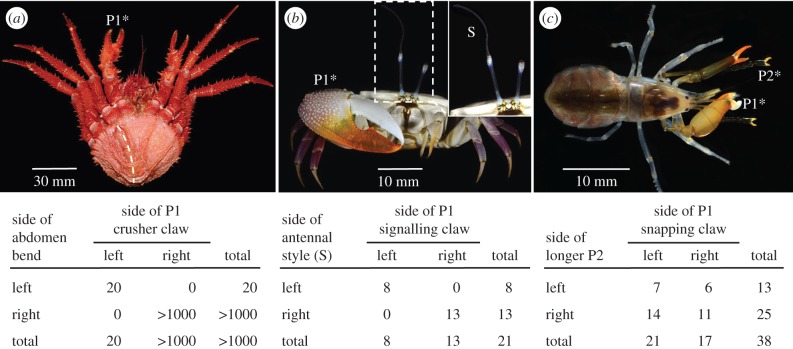Figure 5.
Concordance of multiple asymmetries on individual crustaceans. (a) Ventral view of adult female king crab, Paralomis formosa, illustrating the enlarged claw on the right (P1*) and a pronounced deflection of the abdomen to the right (dashed curve), both typical of female lithodid crabs. In reversed individuals, the enlarged claw is always on the left, the side to which the abdomen also bends (pooled data from seven field-collected adults of five species and 13 laboratory-reared juveniles of two species; data and citations in [102]). (b) Adult male fiddler crab, U. stylifera, illustrating the large P1 signalling claw on the right side (P1*) and the elongate style (S) on the tip of the right eyestalk (enlarged in inset). Like most Uca species, the side of the signalling claw is random. The style in U. stylifera is always on the same side as the signalling claw (table: A. R. Palmer, original data and [103]). (c) Adult female rock-boring snapping shrimp, Alpheus saxidomus. Both periopod P1 (large claws) and periopod P2 (long, snakelike, multi-segmented chelipeds) are asymmetrical. In this specimen, the P1 snapper claw is on the right side (P1*) and the longest P2 feeding leg is on the left side (P2*). In a sample of individuals, there is no consistent concordance of asymmetry (table: A. R. Palmer, original data) (photos: (a) S. E. Anosov and (b,c) A. Anker).

